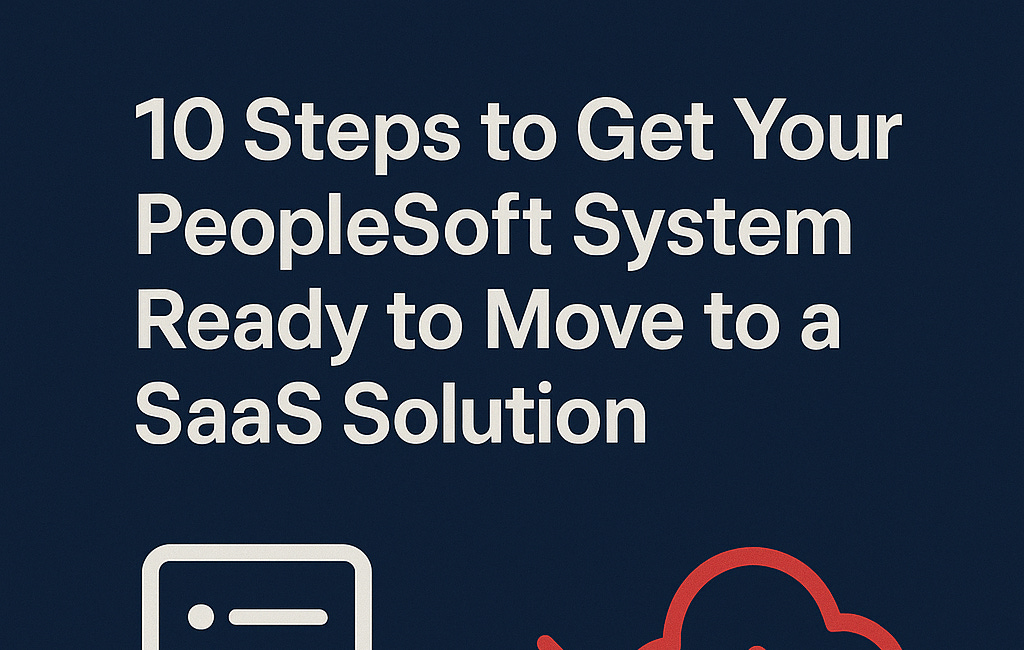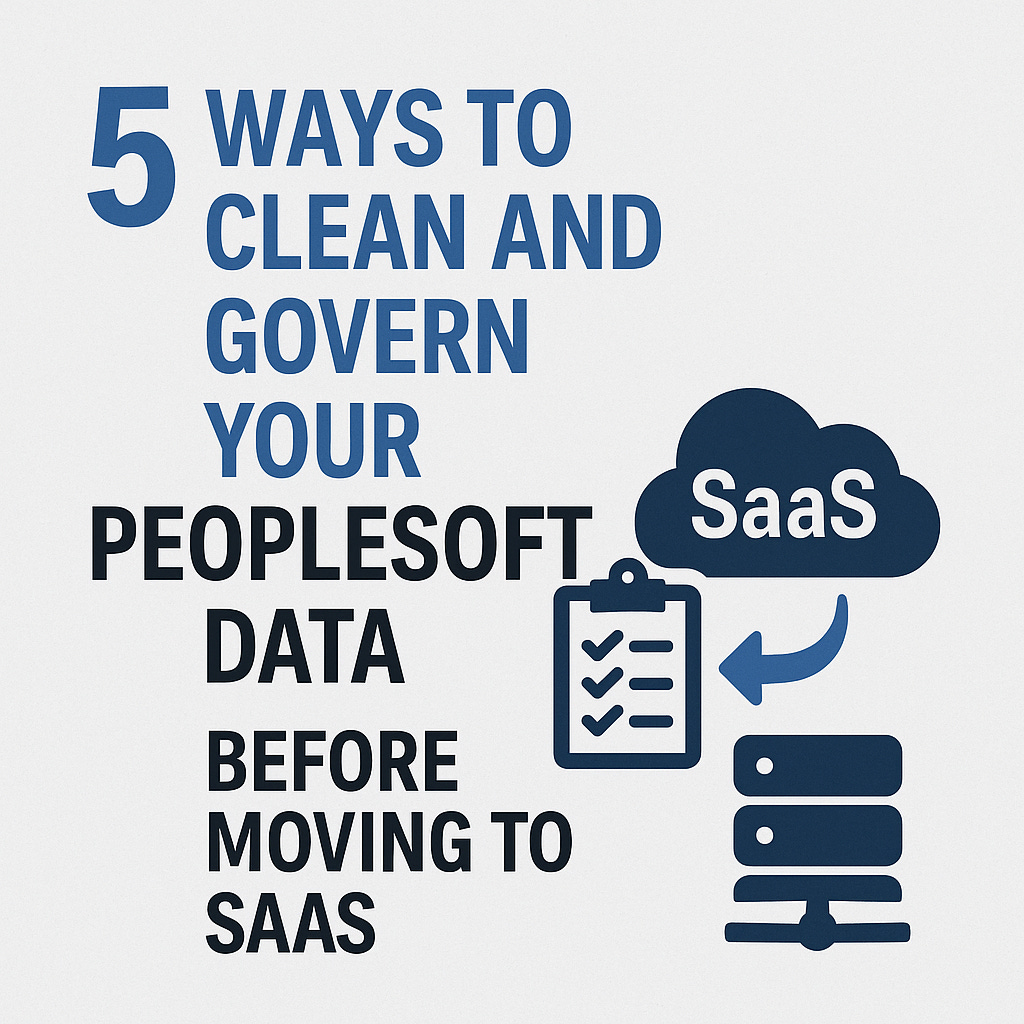5 Ways to Clean and Govern Your PeopleSoft Data Before Moving to SaaS
In the first two parts of this series, we examined documenting what PeopleSoft actually does and evaluating customizations with a clear intent. Both are essential steps in preparing for SaaS, but neither matters if your data is a mess.
This brings us to Step 3 in the “10 Steps to Get Your PeopleSoft System Ready to Move to a SaaS Solution” series: Clean and Govern Your Data.
10 Steps to Get Your PeopleSoft System Ready to Move to a SaaS Solution
For many organizations, PeopleSoft has been a reliable backbone for decades, powering HR, Finance, and Campus operations with flexibility that newer SaaS platforms often struggle to match. But as SaaS adoption grows, leadership teams are asking an important question:
If you’re considering SaaS in the next two to five years, cleaning your data now is one of the highest-return-on-investment (ROI) moves you can make. SaaS systems are rigid in how they handle data. They expect consistency, accuracy, and minimal noise. If you migrate dirty data, duplicate records, or outdated structures, you can easily spend more time fixing problems in SaaS than you ever did in PeopleSoft.
Here are five practical ways to clean and manage your data effectively.
1. Identify and Remove Duplicate or Fragmented Records
PeopleSoft environments often accumulate years of duplicate EMPLIDs, vendor records, address rows, and partial application data. Old conversion files, manual entries, and Excel uploads only compound the issue. Start by building duplicate detection rules and allowing business owners to confirm which records should be retained and which should be merged or removed. A clean, unique key structure will save you a massive amount of pain later.
2. Standardize Key Fields Across Modules
One of the biggest challenges in SaaS migrations is inconsistency. Different teams use different values, formats, or naming conventions for fields like departments, job codes, terms, items, or accounts.
Take time to standardize:
Naming
Status values
Effective-dated structures
Chartfields or coding schemes
This work ensures that, once you migrate, your data behaves predictably, rather than like a patchwork of historical decisions.
3. Archive What You Don’t Need
PeopleSoft environments often contain 15–20 years of inactive student records, former employee information, closed vendor details, outdated job rows, and extensive tables of process logs. Not all of that needs to follow you to SaaS.
Work with business owners to identify:
What must be migrated for compliance
What can be archived offline
What can be purged entirely
The leaner your dataset, the simpler and cheaper your SaaS migration becomes.
4. Build Repeatable Data Quality Checks
Data cleanup isn’t a one-time task, especially in PeopleSoft. Create recurring audits and exception reports that check for missing fields, invalid statuses, expired codes, and broken cross-module relationships. Automate what you can. The goal is to ensure your data stays clean, not just temporarily tidied up.
5. Establish a Real Data Governance Model
SaaS readiness requires more than cleanup; it requires control.
Form a cross-functional data governance group with clear ownership over:
Data definitions
Security and privacy standards
Approval workflows
Master data changes
Integration data contracts
This governance model serves as your guiding framework, not only for the migration but also for the long-term health of your SaaS environment.
Why This Matters
SaaS platforms aren’t as forgiving as PeopleSoft. Dirty data, inconsistent definitions, and outdated structures can disrupt processes, extend project timelines, and significantly increase costs.
Doing the cleanup now gives you:
A smoother migration
Lower consulting costs
Fewer surprises
Better reporting
A stronger foundation for analytics and AI
Clean data is the fuel that makes a SaaS transition succeed or fail.




